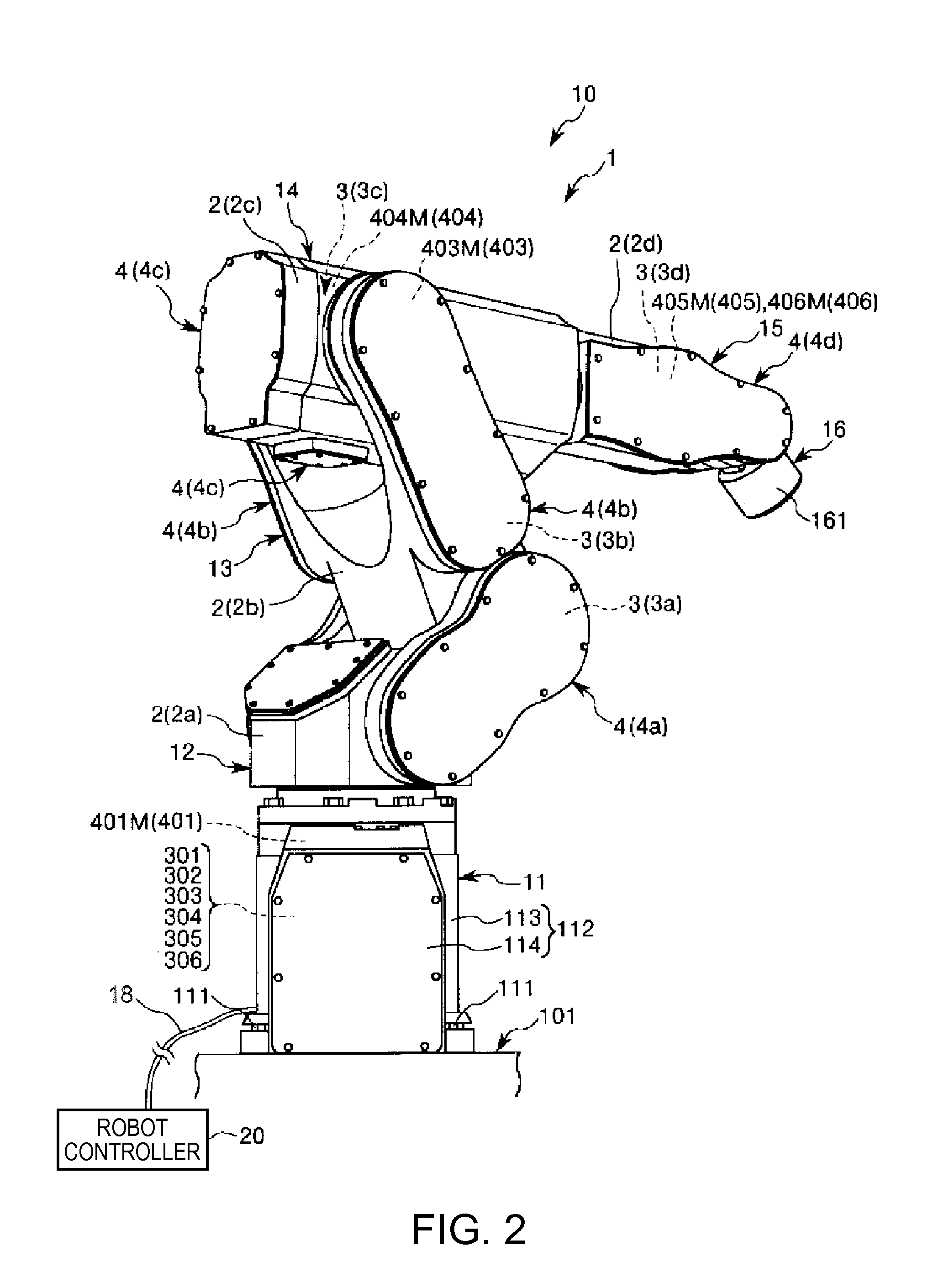Robot and robot controller
a robot controller and robot technology, applied in the field of robot and robot controller, can solve the problems of poor work efficiency and the inability to anticipate vibration suppression, and achieve the effect of reducing the number of vibrations and improving the work efficiency
- Summary
- Abstract
- Description
- Claims
- Application Information
AI Technical Summary
Benefits of technology
Problems solved by technology
Method used
Image
Examples
first embodiment
[0052]FIG. 1 is a perspective view of a robot of the first embodiment of the invention as seen from the front side. FIG. 2 is a perspective view of the robot shown in FIG. 1 as seen from the rear side. FIG. 3 is a schematic diagram of the robot shown in FIG. 1. FIG. 4 is a schematic diagram of the robot shown in FIG. 1. FIG. 5 is a block diagram of a part of robot shown in FIG. 1. FIG. 6 is a block diagram of the part of robot shown in FIG. 1. FIG. 7 is a diagram for explanation of a cycle time. FIG. 8 is a diagram for explanation of an excessive amount of passage from position. FIGS. 9 to 14 are respectively block diagrams of the part of robot shown in FIG. 1.
[0053]Note that for convenience of explanation, the upside in FIGS. 1 to 4 is referred to as “upper” or “above” and the downside is referred to as “lower” or “below”. Further, the base side in FIGS. 1 to 4 is referred to as “proximal end” and the opposite side is referred to as “distal end”. Furthermore, in FIGS. 1 and 2, a ro...
second embodiment
[0188]FIG. 15 is a schematic diagram showing a robot of the second embodiment of the invention. FIG. 16 is a schematic diagram of the robot shown in FIG. 15.
[0189]In the following, the explanation of the second embodiment will be centered on the difference from the above described first embodiment and the explanation of the same items will be omitted.
[0190]Note that for convenience of explanation, the upside in FIG. 15 is referred to as “upper” or “above” and the downside is referred to as “lower” or “below”. Further, the base side in FIGS. 15 and 16 is referred to as “proximal end” and the opposite side is referred to as “distal end”. Furthermore, in FIGS. 15 and 16, a robot controller 20 is shown by block diagrams, respectively. Further, in FIGS. 15 and 16, an inertia sensor 33 is shown outside of the arm 12 for making its existence clear.
[0191]A robot 1A of the second embodiment shown in FIGS. 15 and 16 is called a scalar robot.
[0192]A robot main body 10A of the robot 1A includes...
PUM
 Login to View More
Login to View More Abstract
Description
Claims
Application Information
 Login to View More
Login to View More - R&D
- Intellectual Property
- Life Sciences
- Materials
- Tech Scout
- Unparalleled Data Quality
- Higher Quality Content
- 60% Fewer Hallucinations
Browse by: Latest US Patents, China's latest patents, Technical Efficacy Thesaurus, Application Domain, Technology Topic, Popular Technical Reports.
© 2025 PatSnap. All rights reserved.Legal|Privacy policy|Modern Slavery Act Transparency Statement|Sitemap|About US| Contact US: help@patsnap.com



